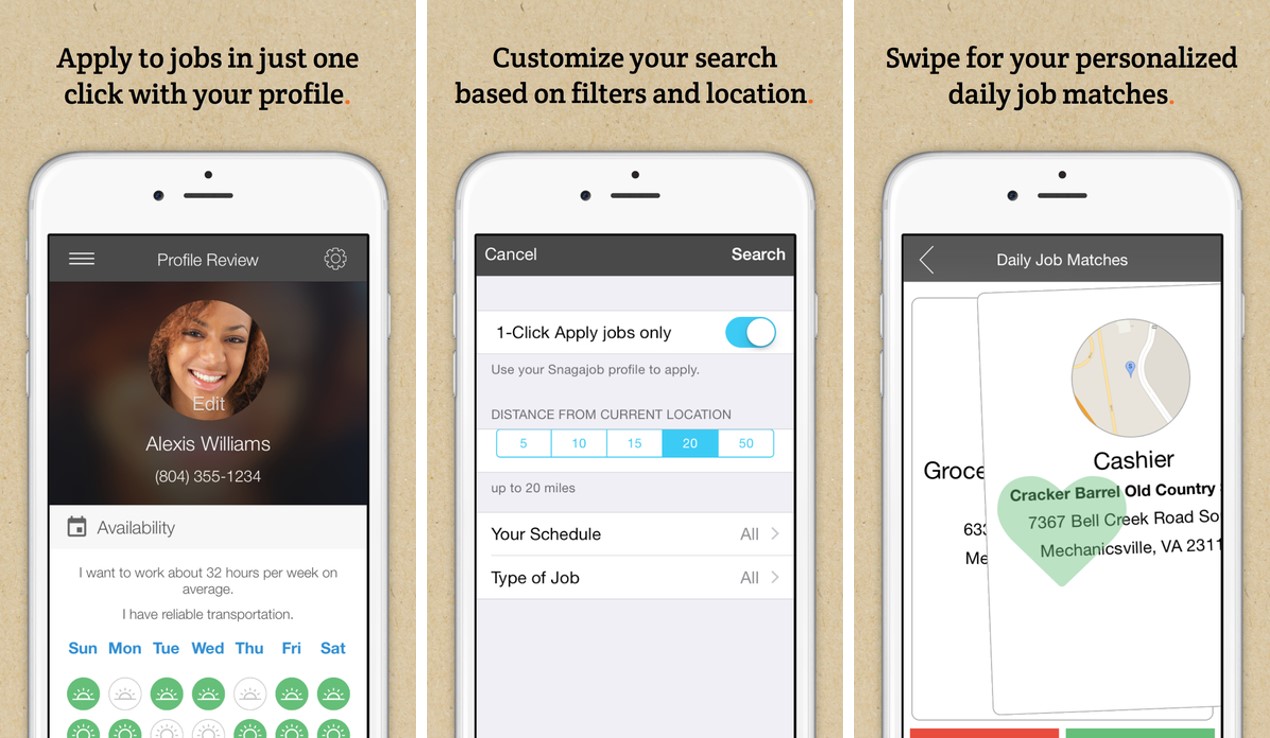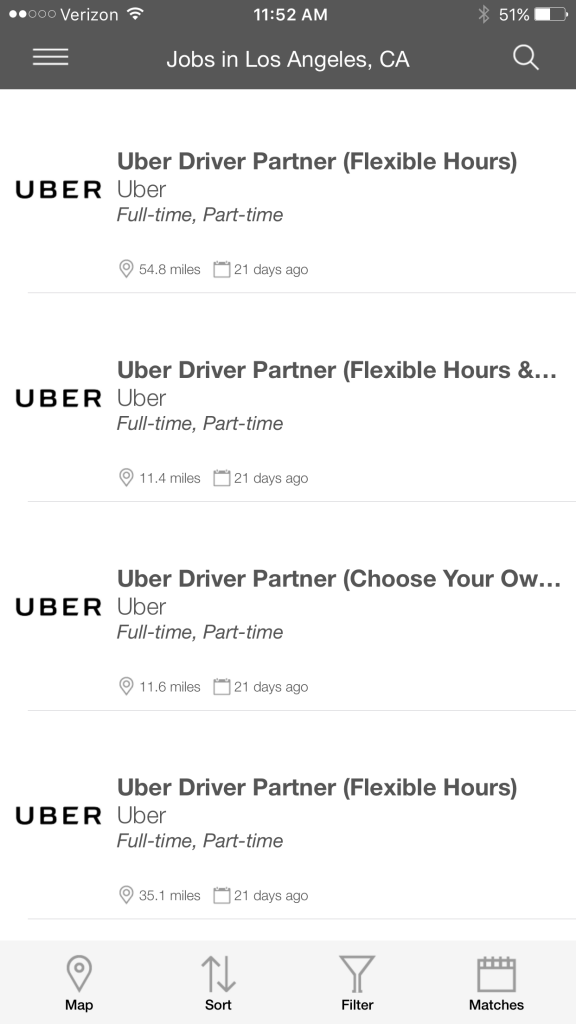The online job listing website Snagajob released its mobile app this past June, allowing job seekers to view an interactive mobile map of immediately available, “lightly skilled” jobs. They’ve been coined “the poor man’s LinkedIn” because of their emphasis on low-pay, low-commitment jobs—the sorts of jobs you would suggest for a high school graduate or someone just getting back into the workforce.
Snagajob has two separate apps for employers and employees. Employers pay Snagajob a subscription fee based on the number of successful clicks their ad receives, and the number of successful meetings and hires it elicits.

You can tell right away what sort of employers are benefiting from this approach. There are hundreds of ads for car and truck sharing jobs like Uber, CRST Expedited and Swift. There are also popular service brands like TJMaxx, Carl’s Jr, and T-Mobile—classic “first jobs.”

There’s even an option for “teen” jobs that are friendly to younger workers. Remember trying to get a worker’s permit or finding a job when you were first starting out? Snagajob wants to make that process easier. I could have definitely used it when I was applying to Panera Bread and Starbucks in high school.

This process is already sort of “easy”; hence how teenagers successfully manage it every day. Since it’s a common “type” of company that tends to specialize in low-experience work, a single day of dropping resumes at a mall or retail plaza can usually give you a pretty comprehensive sense of what’s available. Snagajob lets you do it without leaving the house. It also allows those retail outlets to make moves themselves and find potential candidates with relatively little effort.
Snagajob knows that part-time work is growing, and they want to help people stack multiple part-time jobs at once. Unfortunately, Snagajob’s app doesn’t include an interactive calendar or messaging tool to negotiate and “share” a schedule between different employers. They did, however, release a separate app called Snagashift that’s in a free beta testing period. Once you’ve been hired for a position, it allows individual employers and employees to schedule shifts in real time, trade shifts, and even create and assign checklists. The onus is on the employee to keep track of their different commitments, but Snagashift makes it easier to negotiate adjustments.

If you’re looking for a way to serve multiple clients at once and “share” your time, a service like TaskRabbit is the only major brand that allows complete control over the number and scope of “gigs” you’re willing to accept. Snagajob is filling the demand for low-level jobs that are slightly less flexible and slightly more secure. It’s not a huge niche, but someone’s got to cover it.
Snagajob’s app is relatively bare-bones, streamlining the search functions that have been found on their website since 2000. The addition of an interactive map is helpful and introducing an app option allows people who don’t have computer access to stay connected and aware of opportunities in real time. The app also offers notifications of new “daily job matches” (with a Tinder-esque swiping system) so that the experience is not entirely dependent on the user always searching.

If you’re looking for an alternative to Snagajob that includes some medium-level part time positions, there’s Jobr. You make an account, upload a resume, and then swipe left or right as a number of different jobs pop up. Unlike Snagajob, there’s a huge diversity of jobs on Jobr, and there’s something satisfying about making quick yes/no decisions in the moment—the core interaction in the app is swipe-right/swipe-left. Every time you choose yes (swipe right), an application is automatically sent to the employer.
Like Snagajob, users will still be on their own with Jobr when it comes to juggling many responsibilities and contacts from different jobs. But in the case of just looking for work fast, users now have more options and more access than ever before, and Snagajob will likely turn out to be a helpful alternative.

